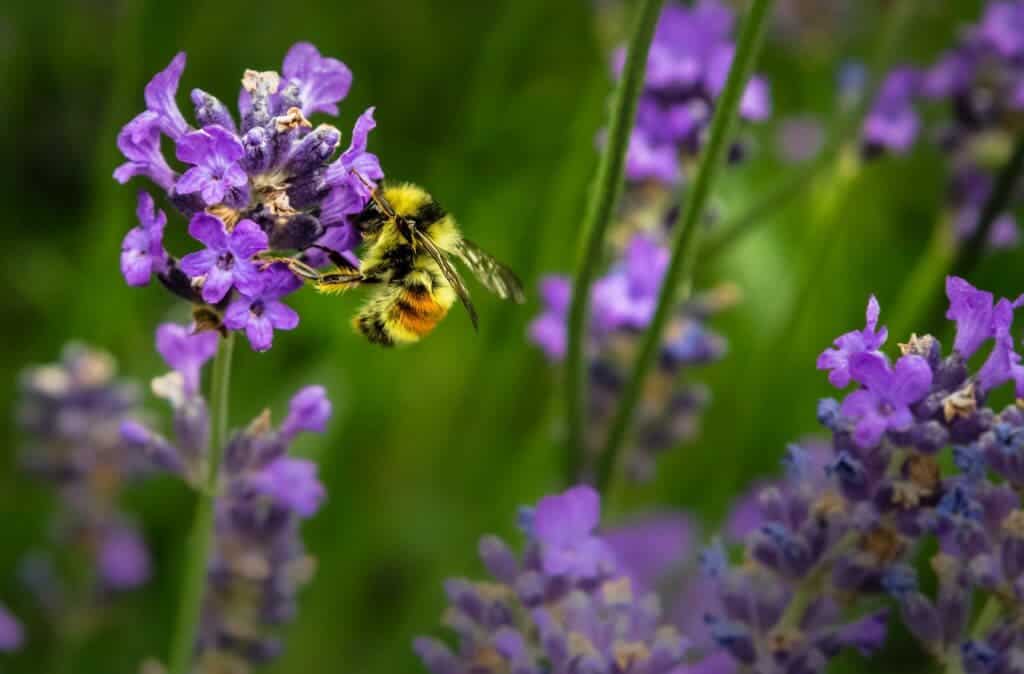A court in California reached a bizarre and potentially very consequential conclusion: for conservation and legal purposes, bees can be considered fish. How could such a decision be reached?

You’d be hard pressed to find similarities between bees and fish. After all, one is a vertebrate that lives underwater, while the other buzzes around the air; one has wings, and the other has gills. Seriously, one is a bee, and the other is a fish. But at least in one way… they’re now both fish.
Let’s rewind a bit. California’s endangered species law is imperfect. It defines species candidates for protection as “bird, mammal, fish, amphibian, reptile or plant” — it doesn’t say anything about insects. So when four different bumblebee species were classified as endangered in 2018, that didn’t clarify things from a legal standpoint.
Agricultural groups sued. Almond growers and citrus farmers, along with other groups, argued that the bees cannot be classified as endangered since insects can’t be endangered in California — again, according to the state law regarding endangered animals (the California Endangered Species Act or CESA), that can only be applied to birds, mammals, fish, amphibians, reptiles or plants, and bees are none of these.
Already, this seems a bit absurd. After all, how could there be no way to define bees (or any other insect) as ‘endangered’ in the US’ most populous state? But while logically it doesn’t make any sense, laws don’t always make sense, and in this case, the agricultural groups had a decent case. In fact, a district court agreed with them in 2020, noting that:
“The Legislature that enacted CESA expressed its intent not to protect invertebrates categorically,” the lower court wrote. “Furthermore, insects do not fall within any of the categories of wildlife that CESA was intended to protect.”
To counter this, the California Fish and Game Commission had to get creative. The Commission, which had moved to protect the bees in 2019 and was trying to make a case for the bees, appealed to section 45 of California’s Fish and Game Code (which is separate from the state’s endangered species act), which defines “fish” as “wild fish, mollusk, crustacean, invertebrate, (or) amphibian.”
Although four different bee species were classified as endangered in 2018, land invertebrates are not explicitly protected under the state’s Endangered Species Act (CESA), which protects endangered “native species or subspecies of a bird, mammal, fish, amphibian, reptile, or plant.” The irony did not appear to escape the judges, who wrote:
“The issue presented here is whether the bumble bee, a terrestrial invertebrate, falls within the definition of fish, as that term is used in the definitions of endangered species in section 2062, threatened species in section 2067, and candidate species (i.e., species being considered for listing as endangered or threatened species) in section 2068 of the Act. More specifically, we must determine whether the Commission exceeded its statutorily delegated authority when it designated four bumble bee species as candidate species under consideration for listing as endangered species.”
It seemed like a long shot, especially given that in 2021, a Sacramento County Superior Court Judge noted that “a counterintuitive mental leap is required to conclude that bumble bees may be protected as fish” and refused to grant fish protection to bees.
But now, in the appeal, judges saw it differently.
At least one species of shrimp, snail, and crayfish are listed as endangered under CESA — and they’re all invertebrates (and they’re not, biologically, fish). Some frogs are also protected under the act. The snail, in particular, is an intriguing case: for decades, it’s been granted “fish” protection, despite not even living underwater, so then why couldn’t the same be said for bees?
“Although the term fish is colloquially and commonly understood to refer to aquatic species,” the judges said, “the term of art employed by the Legislature in the definition of fish in section 45 is not so limited.” In other words, the state “may list any invertebrate as an endangered or threatened species,” Associate Justice Ronald Robie wrote, joined by justices Cole Blease and Andrea Lynn Hoch.
It’s a weird and very convoluted way of granting bumblebees protection, but it’s apparently a workable way of granting invertebrates protection in California — although agricultural groups say they may yet appeal.
“It is a great day for California’s bumble bees,” said Pamela Flick, California Program Director at Defenders of Wildlife, one of the environmental groups that brought the appeal, in a press statement.
In California, as in much of the world, bees and other pollinators have seen a steady decline in the past decades. Invertebrates are the largest group on Earth, and bees (and pollinators in general) are the canary in the coal mine when it comes to climate change and environmental degradation. Protecting them is important not just for their own sake, but also for the sake of ecosystem health. If that means classing bees as fish, so be it.



